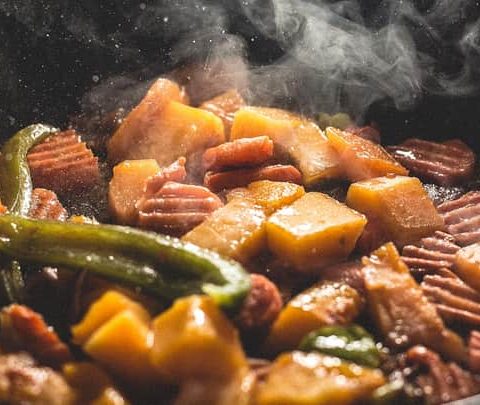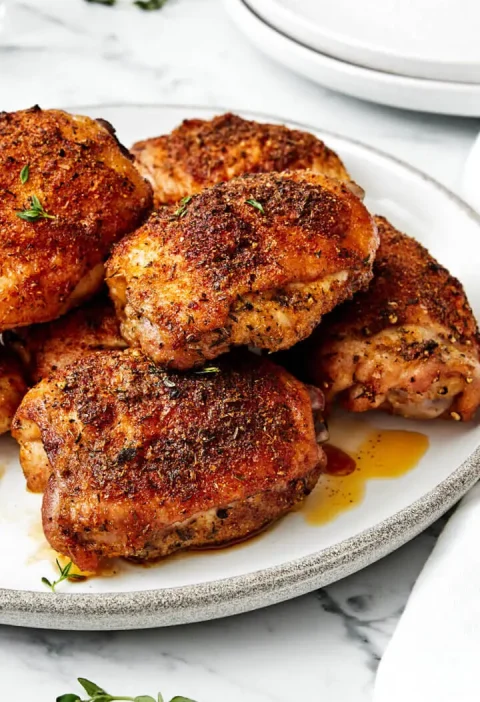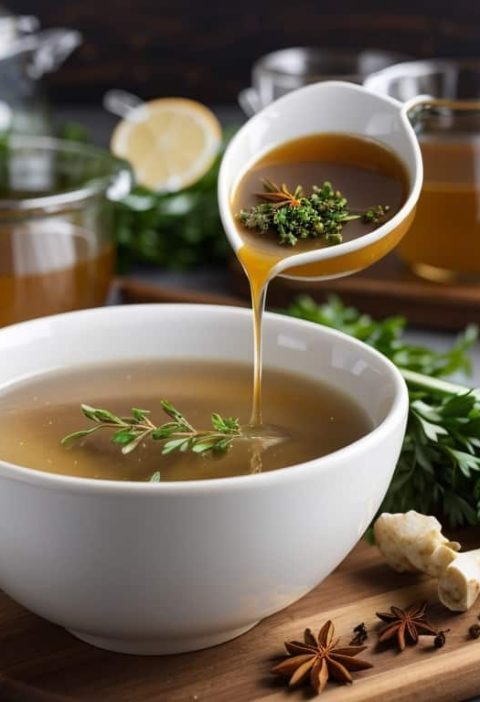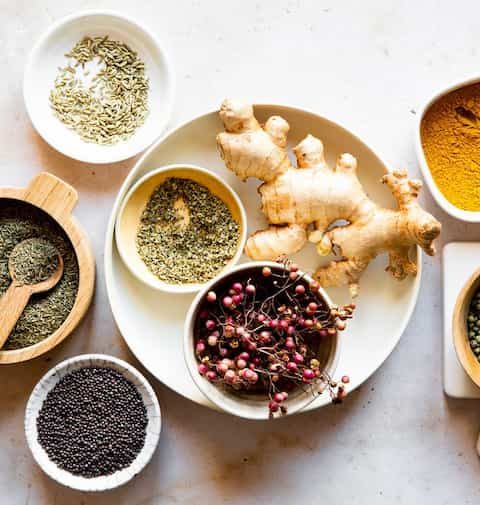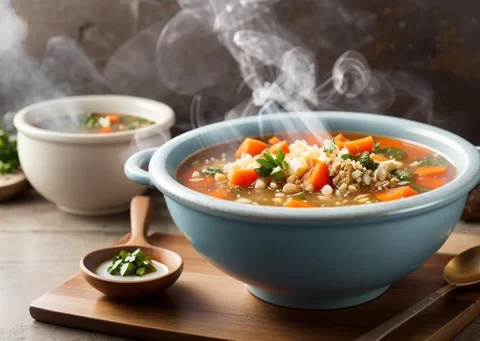Casseroles are warm, comforting, and satisfying. They are also easy to prepare, versatile, and budget-friendly. You can make a casserole with almost any ingredients you have on hand, and customize it to your taste and preference. Casseroles are also great for feeding a crowd, or for making ahead and freezing for later.
But what exactly is a casserole?
How do you make a perfect casserole every time?
What are the best tips and tricks to master the art of casserole making?
In this article, I will answer all these questions and more. I will show you the basics of a casserole, and the secret to a mouthwatering and easy dinner. I will also share with you a complete step-by-step guide to making a delicious chicken and rice casserole, one of my personal favorites. Let’s get started!
What is a Casserole?
A casserole is a type of baked dish that consists of three main components: a base, a binder, and a topping. The base is the main ingredient of the casserole, usually a protein, a starch, a vegetable, or a combination of them. The binder is the sauce that holds the base together and adds flavor and moisture. The topping is the final layer that adds texture and crunch to the casserole.
Some examples of common bases are chicken, beef, tuna, cheese, pasta, rice, potatoes, broccoli, cauliflower, etc. Some examples of common binders are cream of mushroom soup, cheese sauce, tomato sauce, gravy, béchamel sauce, etc. Some examples of common toppings are cheese, bread crumbs, potato chips, french fried onions, crackers, etc.
- Related: Best Cuts of Lamb for Slow Cooking
How to make a perfect casserole every time?
Creating a flawless casserole every time is achievable with these straightforward steps:
1. Select the Appropriate Dish
Opt for a shallow baking dish, such as a 9×13-inch pan or a 2.5-quart casserole dish. This choice ensures uniform cooking and even browning. Deep dishes are not recommended as they may lead to prolonged cooking times and potentially soggy results.
2. Preheat the Oven
Properly heating your oven is crucial. Most casseroles bake well at 350°F, although some recipes might call for different temperatures. Always refer to your recipe for specific heating instructions. Preheating guarantees your casserole cooks evenly and achieves a desirable bubbly texture.
3. Prepare the Base
Your base preparation depends on the ingredients. For raw meats like chicken or beef, cook them until they lose their pink color and drain any excess fat. Cooked meats, like leftovers, can be added directly. Pasta or rice should be cooked to al dente, as they will continue to cook in the oven. For vegetables, blanching or sautéing to a crisp-tender state prevents them from turning mushy.
4. Craft the Binder
The binder adds flavor and moisture. You can use a pre-made soup or sauce, adjusting its consistency with water, milk, broth, or wine. Alternatively, create your own sauce on the stovetop using ingredients like butter, flour, milk, cheese, and spices. Aim for a consistency that’s thick enough to coat a spoon but not overly dense.
5. Assemble the Casserole
Layer the base, binder, and topping in your dish. You can mix the base and binder before spreading them in the dish, or layer them separately, finishing with the topping. Ensure the topping covers the last layer of the binder entirely for a consistent crust.
6. Bake the Casserole
Place the casserole in your preheated oven. Bake until it’s hot, bubbly, and the topping is golden. If the topping browns too fast, cover with foil, removing it in the final 10 minutes. Add extra liquid if the casserole seems dry, and continue baking until it reaches your desired consistency.
7. Serving
Let the casserole rest for about 10 minutes before serving. This allows the flavors to meld and the dish to set properly. Serve it as a main or side dish, adjusting portion sizes as needed. Enhance its appeal with fresh herbs like parsley, cilantro, or basil for added color and freshness.

A Complete Step-by-Step Guide to Making a Delicious Chicken and Rice Casserole
Now that you know the basics of a casserole, let me show you how to make a delicious chicken and rice casserole, one of my personal favorites. This casserole is creamy, cheesy, and comforting, and it is easy to make with simple ingredients.
Here is what you will need:
Ingredients
- 4 tablespoons of butter
- 1/4 cup of all-purpose flour
- 2 cups of chicken broth
- 1 cup of milk
- 1 teaspoon of salt
- 1/4 teaspoon of black pepper
- 1/4 teaspoon of garlic powder
- 1/4 teaspoon of onion powder
- 2 cups of shredded cheddar cheese
- 4 cups of cooked chicken, chopped or shredded
- 3 cups of cooked white rice
- 1/4 cup of chopped parsley
- 1/4 cup of bread crumbs
- 2 tablespoons of melted butter
Instructions to Make Chicken and Rice Casserole:
- Preheat the oven to 350°F and grease a 9×13 inch baking dish.
- In a medium saucepan over medium heat, melt the butter and whisk in the flour, cooking for 2 minutes, stirring constantly, to make a roux.
- Gradually whisk in the chicken broth and the milk, and bring the mixture to a boil, stirring frequently, to make a béchamel sauce.
- Reduce the heat and simmer the sauce for 10 minutes, stirring occasionally, until it is thick and smooth.
- Stir in the salt, pepper, garlic powder, onion powder, and 1 1/2 cups of the cheese, and cook until the cheese is melted, stirring constantly, to make a cheese sauce.
- In a large bowl, toss the chicken and the rice with the parsley, and spread the mixture evenly in the prepared baking dish.
- Pour the cheese sauce over the chicken and rice mixture, and sprinkle the remaining 1/2 cup of cheese on top.
- In a small bowl, toss the bread crumbs with the melted butter, and sprinkle them over the cheese layer.
- Bake the casserole for 25 to 30 minutes, or until it is hot and bubbly, and the topping is golden and crisp.
- Let the casserole rest for 10 minutes before serving, and enjoy!
What are some variations of chicken and rice casserole?
Experimenting with different ingredients can transform the classic chicken and rice casserole into a variety of delightful dishes:
Vegetables
- Add vegetables like peas, carrots, corn, mushrooms, or spinach. These not only provide additional flavors and textures but also increase the nutritional value.
Cheeses
- Experiment with various cheeses such as mozzarella, parmesan, Monterey jack, or a blend for different flavor profiles. Each cheese brings its unique taste and melting characteristics to the dish.
Sauces
- Switch up the base sauce. Instead of traditional cream-based sauces, try cream of chicken, mushroom, or celery soups. These soups offer convenience and add depth to the flavor.
Seasonings
- Introduce different seasonings like curry powder, paprika, cumin, or oregano to infuse international flavors. Each seasoning can dramatically alter the taste profile, offering a new experience with each variation.
Toppings
- Explore a range of toppings. Classic breadcrumbs, cheese, or potato chips add crunch, while French fried onions or crushed crackers provide a unique twist. These toppings not only enhance the texture but also add to the visual appeal of the dish.
How do you freeze and reheat a casserole?
To ensure your casserole retains its quality when frozen and reheated, follow these steps:
Freezing the Casserole
- Cooling: Allow the casserole to cool completely. This prevents condensation inside the packaging, which could lead to freezer burn.
- Packaging: For optimal preservation, wrap the casserole dish tightly with aluminum foil and then with plastic wrap. Alternatively, you can transfer the casserole to a freezer-safe container or a sealable freezer bag.
- Labeling: Mark the container with the dish’s name and the freezing date. This practice helps in maintaining proper food rotation and usage within the recommended timeframe.
- Freezing Duration: Store the casserole in the freezer for up to three months. Beyond this period, the quality may start to degrade.
Reheating the Casserole
- Thawing: Thaw the casserole gradually by placing it in the refrigerator overnight. For a quicker method, use the microwave’s defrost setting. Even thawing helps in achieving uniform reheating.
- Oven Preparation: Preheat the oven to 350°F. This temperature is generally safe and effective for reheating most casseroles.
- Reheating: Place the thawed casserole in the oven and heat for 20 to 30 minutes or until it is thoroughly warmed, and bubbly, and the topping regains its crispness. If the casserole seems dry, add a bit of liquid (water, milk, broth, or wine) to moisten it.
FAQs
What is the difference between a casserole and a bake?
A casserole and a bake are similar dishes, but they have some differences. A casserole usually has a base, a binder, and a topping, while a bake may not have a topping or a binder. A casserole is also more liquid and creamy, while a bake is more dry and crispy. A casserole is usually cooked in a casserole dish, while a bake can be cooked in any baking dish.
How do you make a casserole without canned soup?
You can make a casserole without canned soup by making your sauce from scratch. You can use butter, flour, milk, cheese, and spices to make a basic cheese sauce, or you can use broth, wine, cream, and herbs to make a gravy-like sauce. You can also use tomato sauce, salsa, or pesto to make a more flavorful sauce.
Final Words
Casseroles are easy, versatile, and affordable. They are great for big groups or meals you can make ahead and freeze.
By following simple steps – choosing the right dish, cooking the base, making the binder, putting it all together, and baking – you can make a tasty and filling meal. Casseroles are not just delicious; they are also healthy. They can have many different ingredients like meat, starch, veggies, cheese, and sauce. Casseroles are perfect for any meal, whether it’s a quick dinner, a party, or a holiday. Try making one today and enjoy its comforting taste.

